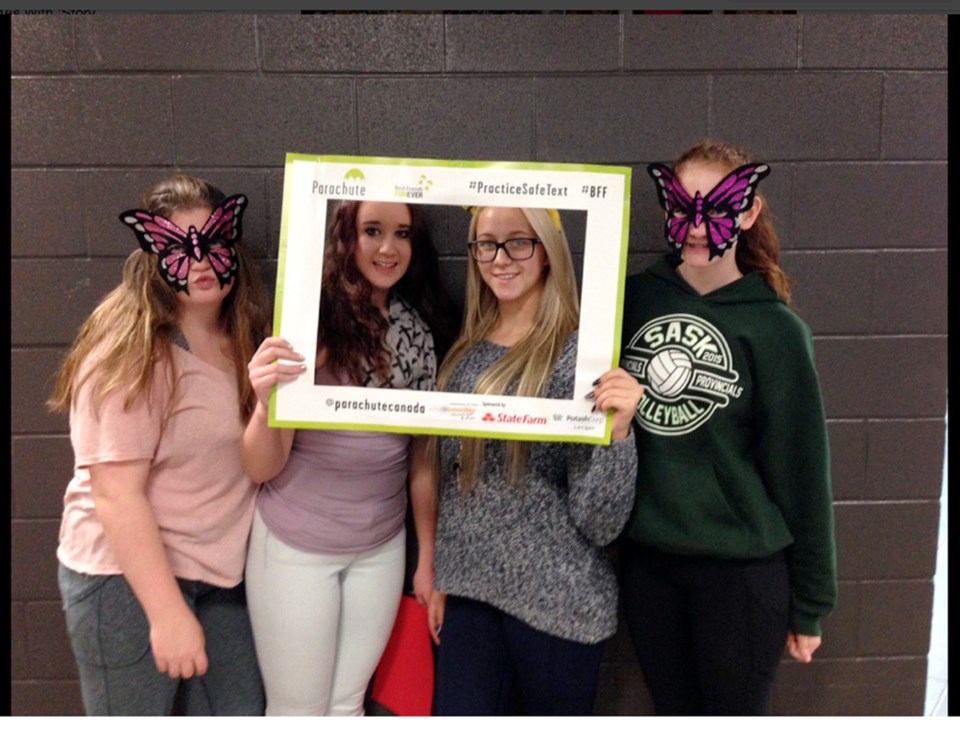It’s a sad reality. People of all ages are still texting and driving.
The Students Against Drunk Driving HCI chapter wanted to curve that behavior in their fellow students with an awareness week for National Teen Driving Safety Week, Oct. 19-25.
Student Eilish McAnally wanted other students to know, “you’re not just putting your life at risk, you’re putting other people’s lives at risk and it’s more of a problem than people think it is.”
But even with a week of awareness at Humboldt Collegiate Institute, none of the students of the Students Against Drunk Driving group believed they’ve swayed their classmates not to text and drive.
One student came to the sad conclusion.
“I feel like it has to happen to a friend. If they lost a friend then they’d realize they’d have to stop.”
The students planned a photo booth, handed out lifesavers with the phrase, ‘be a life saver, not a life taker’ on it, and on Oct. 22, they had death day, a day where students ‘died’ at the same rate they are killed by distracted driving.
More needs to be done, says student Mackenzie Schidlowski, and it should not just be in schools, it should be community wide awareness, she says.
Student Taylor Lins suggests getting the city and the community involved to talk about the dangers of distracted driving.
“This is a little stepping stone, we have to get further,” Lins says.
Student Jordan LaBuick says starting younger would make a difference in teaching new drivers not to text and drive before they get their license.
LaBuick also suggested showing a more realistic portrayal of losing someone.
“Pick someone and show them what it would be like if they lost their friend. Then they’d realize they shouldn’t do that, it’s not right.”
Teacher Jamie White says her students have done an awesome job in raising awareness. She’s ready to push them to the next level, like getting the mayor, the RCMP and the grade 8 classes together, like the students have suggested.
Traumatic presentations do seem to stick with the students, they said.
White recalls a presenter last year who brought his son out on stage with him to talk about texting and driving. He brought out an urn.
The SADD students believed it was traumatic but says there were still classmates in the audience who believe it will not happen to them.
For the students who’ve already lost friends or family or know someone in an accident where texting while driving was a factor, a speaker is someone they can relate to and they can agree that it is sad and traumatic. For someone who has not gone through that, students think it is never going to happen to them, said Lins.
In a recent study by the University of Regina, there has been a drop in the percentage of youth who text and drive. The number of young people saying they ‘sometimes’ or ‘almost always’ text and drive has dropped from 27 per cent to 6 per cent. However, the study also relates this to other risky behaviours, like speeding and talking on the phone while driving.




